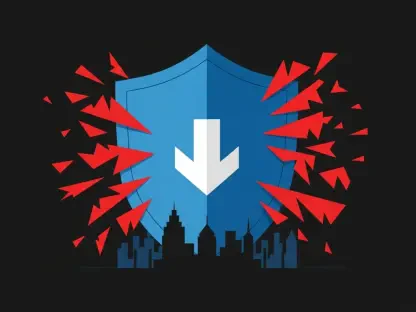Decentralized finance, commonly known as DeFi, has fundamentally transformed the financial sector by leveraging blockchain technology to create trustless systems that bypass traditional intermediaries, offering unprecedented access and autonomy to users worldwide. This groundbreaking shift promises to democratize finance, but it is not without significant drawbacks. The open and intricate structure of DeFi makes it a prime target for cyber threats, ranging from sophisticated phishing scams to simple user mistakes that can result in staggering financial losses. A stark illustration of this vulnerability came in September with the Venus Protocol incident, where a single user lost $27 million after approving a malicious transaction. Such high-profile cases underscore a pressing reality: as DeFi continues to grow, so do the security risks that threaten its stability and user trust. Addressing these challenges through innovative insurance solutions is no longer optional but essential for the ecosystem’s survival and scalability.
Exploring the Security Challenges in DeFi
The Human Element as a Weak Link
The DeFi landscape, while technologically robust, often falters at the intersection of human behavior and digital interaction, exposing users to risks that no amount of code can fully eliminate. Phishing attacks, which exploit psychological vulnerabilities rather than technical flaws, have emerged as a leading threat, with losses nearing $100 million in the first quarter of this year alone. These scams, increasingly powered by AI-driven tactics such as deepfakes and social engineering, prey on unsuspecting users, tricking them into actions like approving fraudulent transactions. The Venus Protocol case, where a user’s error led to a massive financial loss, exemplifies how a single lapse in judgment can undo the benefits of a decentralized system. This persistent challenge highlights that security in DeFi cannot rely solely on technological fixes; it must address the human factor, where errors and manipulation create openings for exploitation that can devastate individual portfolios in an instant.
Systemic Risks and Market Confidence
Beyond individual losses, the interconnected nature of DeFi protocols amplifies the impact of security breaches, creating ripple effects that destabilize the broader ecosystem and shake investor confidence. When a breach occurs on one platform, such as the Venus Protocol incident that saw its native token, XVS, plummet by 6% in value, the fallout often spreads to linked protocols through shared liquidity pools and dependencies. This cascading volatility not only harms the affected platform but also undermines trust in DeFi as a viable alternative to traditional finance. The psychological impact on the market is profound, as users and investors begin to question the safety of their assets in a system where transactions are irreversible and recourse is limited. This systemic vulnerability reveals a critical gap: without mechanisms to contain and mitigate breaches, even isolated incidents can threaten the stability of an entire network, making comprehensive protection a priority for sustaining growth.
Innovations in DeFi Insurance as a Shield
Bridging the Coverage Gap
A promising wave of innovation in decentralized insurance is beginning to address the glaring deficiencies in traditional coverage models, offering hope for a more secure DeFi environment tailored to its unique risks. Unlike conventional policies that often exclude user errors or social engineering attacks, newer protocols are expanding their scope to protect against personal wallet compromises and phishing incidents. By harnessing blockchain’s inherent transparency, these solutions enable automated claims processing, reducing friction and ensuring swift payouts when disasters strike. Additionally, parametric insurance models, which disburse funds based on predefined triggers rather than lengthy assessments, are gaining ground as a way to streamline compensation. These advancements signify a pivotal shift toward user-centric protections, aiming to cover the very risks—such as the 23% of crypto thefts attributed to phishing this year—that have long been overlooked by standard frameworks.
Leveraging Technology for Proactive Defense
Technology is proving to be a game-changer in fortifying DeFi against the rising tide of security threats, moving beyond reactive measures to proactive defense strategies that stop issues before they escalate. AI-driven tools designed for real-time threat detection are increasingly integrated into platforms, flagging suspicious transactions and alerting users to potential fraud in the moment it occurs. Meanwhile, smart contract-based insurance protocols enhance efficiency by automating payouts, eliminating the delays and disputes that often plague traditional claims processes. This dual approach not only mitigates losses but also builds a layer of prevention, tackling threats at their source rather than merely compensating after the damage is done. As these tools evolve, they promise to create a more resilient ecosystem where users can engage with DeFi confidently, knowing that both preventive and restorative measures are in place to safeguard their assets against sophisticated cyber risks.
Future Pathways for Strengthening DeFi Security
A Booming Market with Untapped Potential
The DeFi insurance sector stands on the cusp of remarkable growth, presenting a compelling opportunity for stakeholders to address security gaps while tapping into a lucrative market projected to reach $7.2 billion by 2033 with a compound annual growth rate of 26.70%. This potential is driven by the stark imbalance between DeFi’s staggering $1 trillion total value locked and the mere fraction—less than 2%—currently insured against risks. For innovators and investors, this disparity signals a chance to develop scalable, tailored solutions that not only protect user assets but also position the industry for exponential expansion. As cyber threats grow more complex, the demand for specialized coverage will only intensify, making this an opportune moment to invest in and shape the future of financial security within decentralized systems, ensuring that protection keeps pace with innovation.
Navigating Roadblocks to Widespread Adoption
Despite the promising outlook, significant challenges remain on the path to integrating robust insurance solutions across the DeFi ecosystem, requiring concerted efforts from multiple fronts to overcome entrenched barriers. User education stands out as a critical need; while tools like transaction approval checkers and hardware wallets can prevent errors, their effectiveness hinges on widespread awareness and adoption, which currently lag behind. Regulatory alignment poses another hurdle, as crafting standards for phishing prevention and insurance coverage demands collaboration among platforms, insurers, and policymakers to balance innovation with safety. Additionally, insurers must pivot to dynamic risk modeling, leveraging on-chain data and AI to adapt to an ever-shifting threat landscape. Tackling these obstacles is essential to transform DeFi insurance from a niche offering into a mainstream safeguard, ensuring that the ecosystem can withstand rising security risks with resilience and trust.
Building a Collaborative Framework for Resilience
Reflecting on the journey so far, the DeFi space has grappled with profound vulnerabilities, from phishing attacks to user errors, as evidenced by incidents like the Venus Protocol loss that shook individual and systemic trust. The shortcomings of traditional insurance, which often left users exposed, prompted a surge of decentralized solutions that harnessed blockchain and AI to offer broader, automated protections. Innovations such as parametric models and real-time threat detection marked significant strides in addressing both technical and human-centric risks. Yet, the path to a secure future rests on actionable steps taken in response to these challenges: prioritizing user education, fostering regulatory cooperation, and advancing risk assessment tools have become cornerstones of progress. These efforts lay the groundwork for a more resilient financial system, demonstrating that collaboration across stakeholders can turn the promise of DeFi into a lasting reality, safeguarding its transformative potential for years to come.









